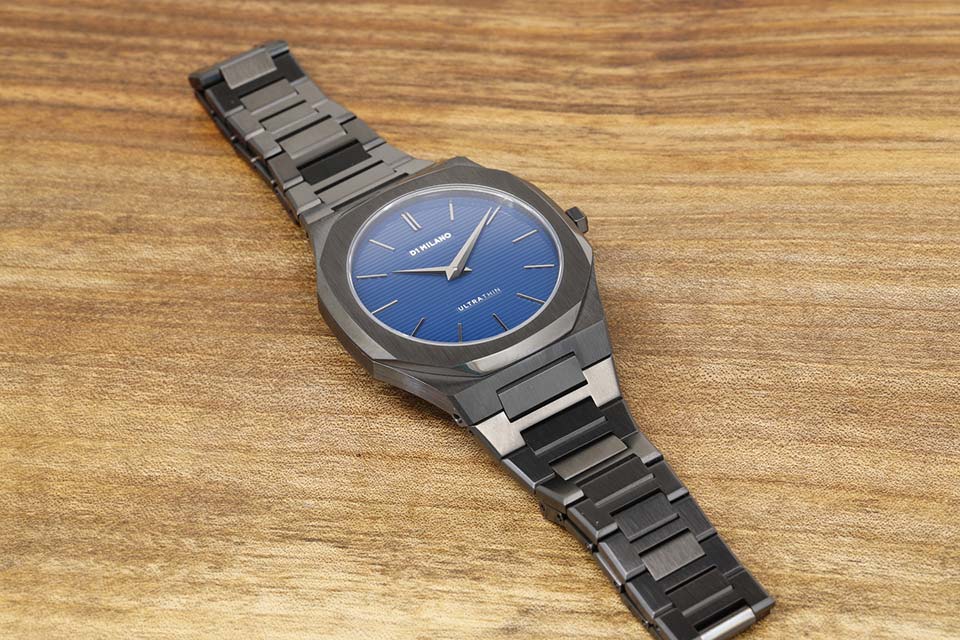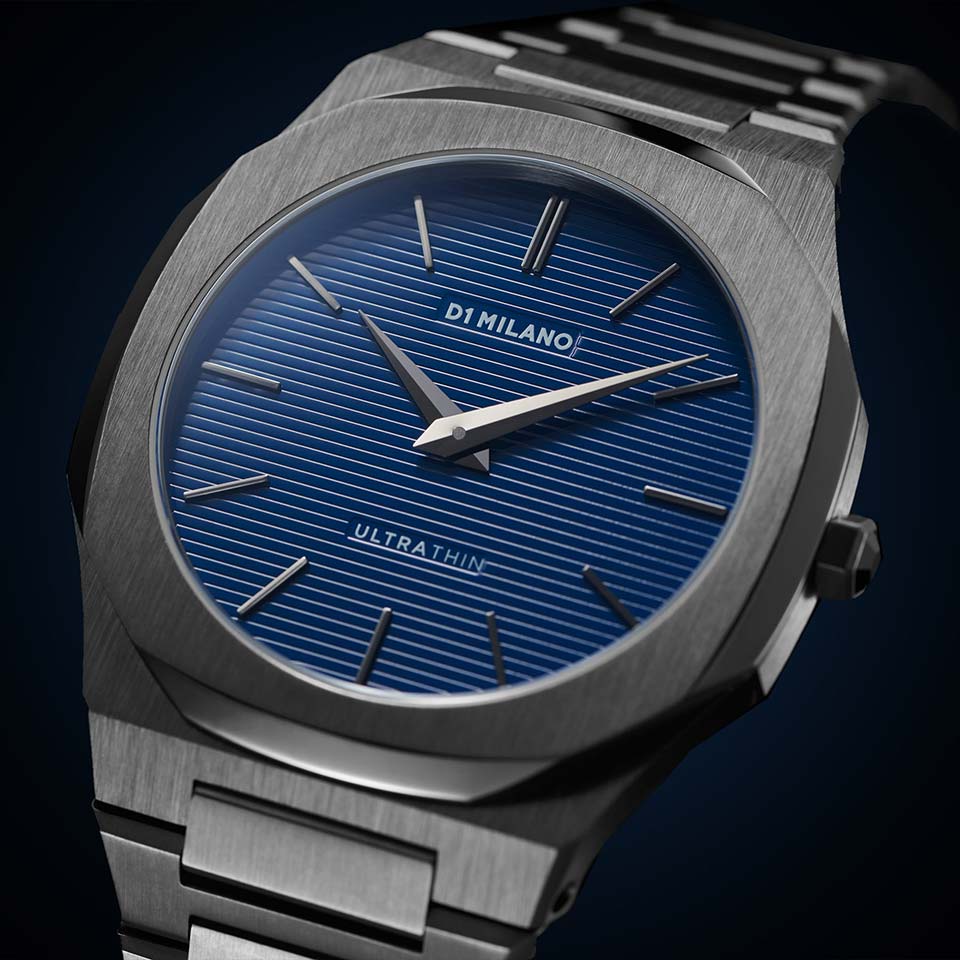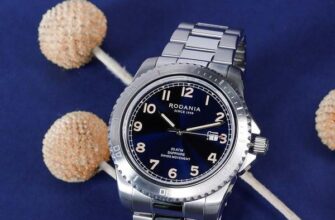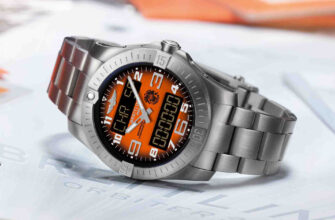At first glance, the D1 Milano Ultra Thin two-hand switch is typical fashion. But in fact, this is a well-designed and high-quality watch, beautifully playing with a lot of "watch" associations.
D1 Milano is more than a fashion brand
The D1 Milano brand was created by a young Italian named Dario Spallone in 2013, presented at Milan Fashion Week the same year, and in 2014 got into the business incubator of the University of Milan Luigi Bocconi. The flagship store of the brand is, of course, in Milan. However, the company's headquarters are in Hong Kong (like Spinnaker, Dan Henry and many other micro brands) and Dubai (the Middle East is a key market for the brand, along with Italy itself).
Production, according to Spallone himself, is located in Shenzhen, China. Mechanisms are the budget workhorses of Seiko and Miyota (don't look at D1 mechanical skeletons under a magnifying glass). All this is indicated on the watch itself: on the back cover is engraved "Italian design, Japanese movement". And on the protective sticker that covers this cover, it is smallly written that the watch was assembled in China (I wonder if anyone even reads the inscriptions on such stickers).
It would seem that a typical fashion brand? Yes, but no.
In the DNA of the D1 Milano brand, chromatism is in the first place - higher than the usual “materials” and “attention to detail”. And in this direction, D1 does more than you would expect from a fashion brand with less than 30 employees. At one time, D1 was the first in the world to introduce a thermochromic watch that changes color depending on temperature. And now the company is developing a material that absorbs all the light for a perfectly black watch. Yes, H.Moser & Cie already have them. But walking the path of H.Moser & Cie on your own is a great achievement for a fashion brand.
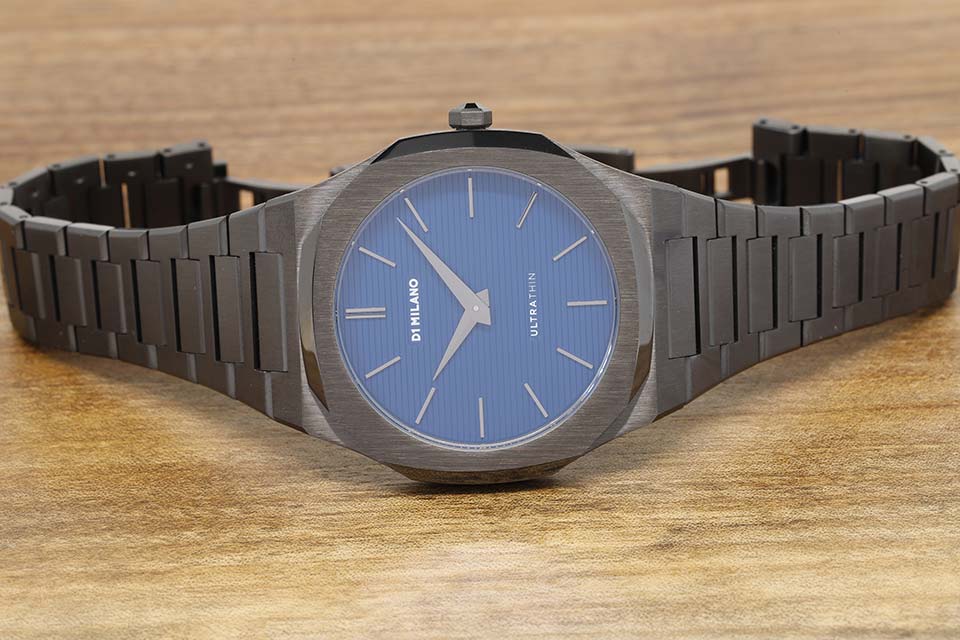
In the footsteps of Gerald Gent
At the turn of the 60s and 70s watch designer Gerald Genta created the Octo watch. And in the 1970s, he revealed to the world icons known to every watch connoisseur: Audemars Piguet Royal Oak and Patek Philippe Nautilus. The motto of the D1 Milano brand is "70's soul with a modern twist". And it's true: there are a lot of references to Genta's models from the 70s in the D1 watches. Actually, the brand itself is an homage to Gente.
The five current D1 Milano collections (there are eight in total) use the same body shape, assembled from Genta elements. Two more give it a fresh take: the Subacqueo interprets it in the form factor of a diver, while the Commando combines an elegant octagon with the recognizable features of the Dirty Dozen, British military watches from the Second World War. The eighth collection, Carbonlite, has its own special atmosphere with translucent composite materials.

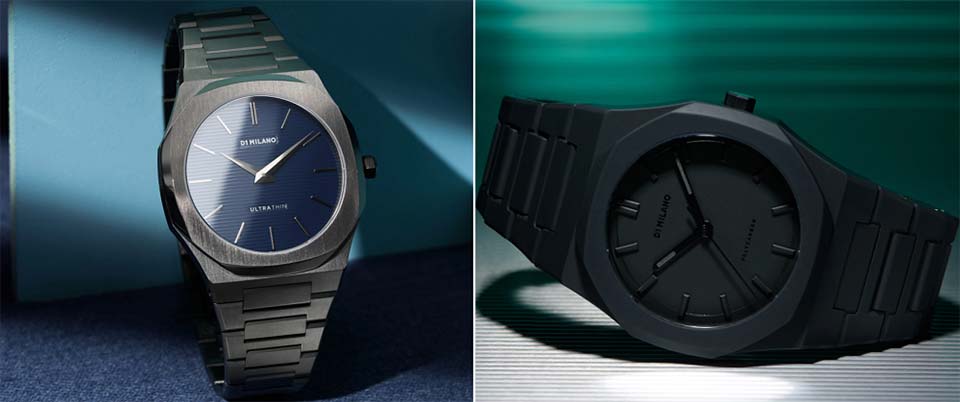
Let's take a look at our Ultra Thin UTBJ12. The shape of the bezel and case (octahedron on octahedron) refer to the Octo, which, in turn, formed the basis for the design of modern Bvlgari - for example, Octo Finissimo Ultra, the world's thinnest mechanical watch (1,8 mm). The hexagonal crown and eight screws at the corners of the octagonal caseback are a nod to AP Royal Oak. The “thick” chamfered bezel is again from Royal Oak and PP Nautilus. The protrusions on both sides of the case are from Nautilus ... If you wish, you can find other references.
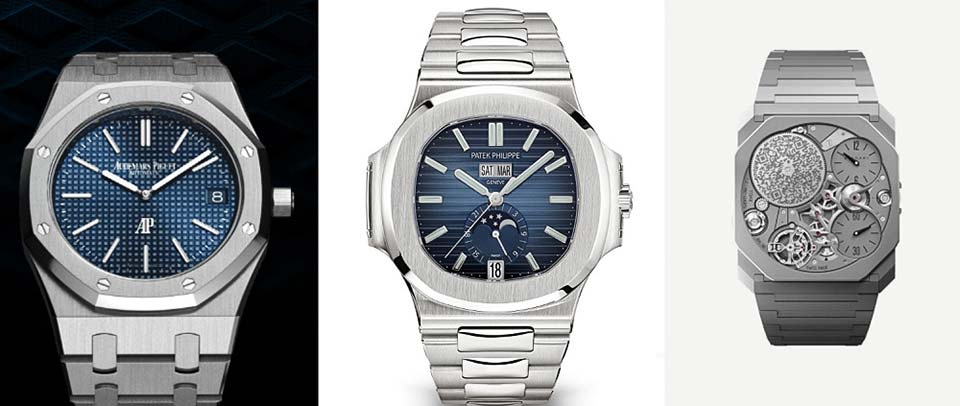
Just copying the design is easy. It is difficult to take good ideas and create something of your own based on them. Although the design of D1 Milano is based on many of Genta's ideas, in the end the brand did a great job and presented beautiful and original solutions.
For example, the crown - a hexagon, like the Royal Oak - is decorated with a complex cabochon. This is a faceted cabochon, bright black on a jet black crown (look at the photo - even it shows the contrast). Beautiful, elegant, fits perfectly into the overall style with clear edges.
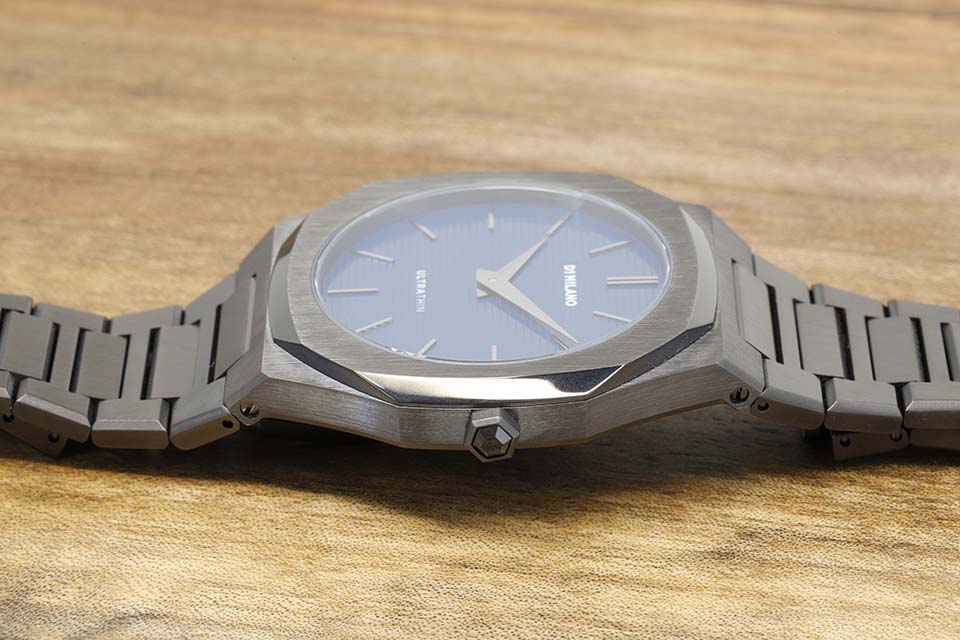
Or here is the bezel: the smoothness of outlines and the wide chamfer are reminiscent of Nau, but the shape of the chamfer is more complicated. At 12, 3, 6 and 9 o'clock it is wide and smooth, and "at the corners" it smoothly goes to zero. Or take the screws, like the Royal Oak: it would be easy to fit them on the bezel, copying the legendary “diving helmet” design. But they are on the back of the watch - a little secret, an allusion only for the eyes of the owner. Therefore, I said and I will repeat: D1 Milano did a great and beautiful design job.
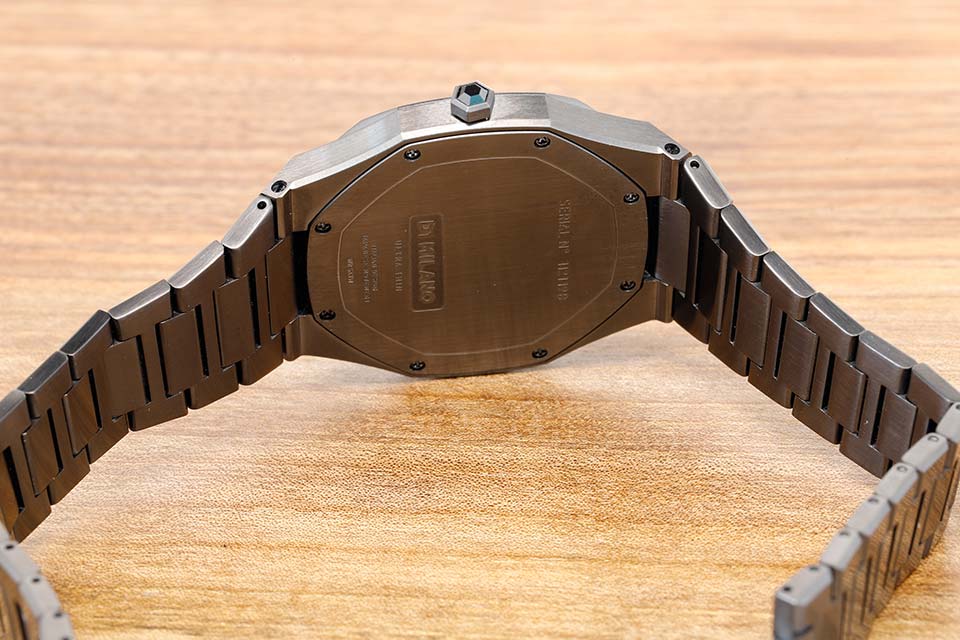
In addition to the most striking associations of the first level, the D1 Milano Ultra Thin is also reminiscent of some other, lesser-known watches. For example, here's what I'm thinking about:
- The Ultra Thin branded quartz watch is reminiscent of the Concord Delirium IV and The Citizen Eco-Drive One. The first are the thinnest quartz watches and wristwatches in general (0,98 mm). They were not worn in real life because the body flexed when put on. The second is the thinnest quartz watch with a solar battery (2,98 mm). You can even buy them if you find them.
- The concept of an inexpensive ultra-thin watch reminds me of the Citizen Stiletto. They are about a third more expensive than D1 Milano and much more technologically advanced: with a solar battery and much thinner (4,5 mm versus 6 mm). But in terms of design, of course, they lose to the Italian-Chinese.
- The integrated bracelet and the overall styling are reminiscent of the Tissot PRX, a fashion statement for 2021 (which, by the way, is also based on a 1970s model).
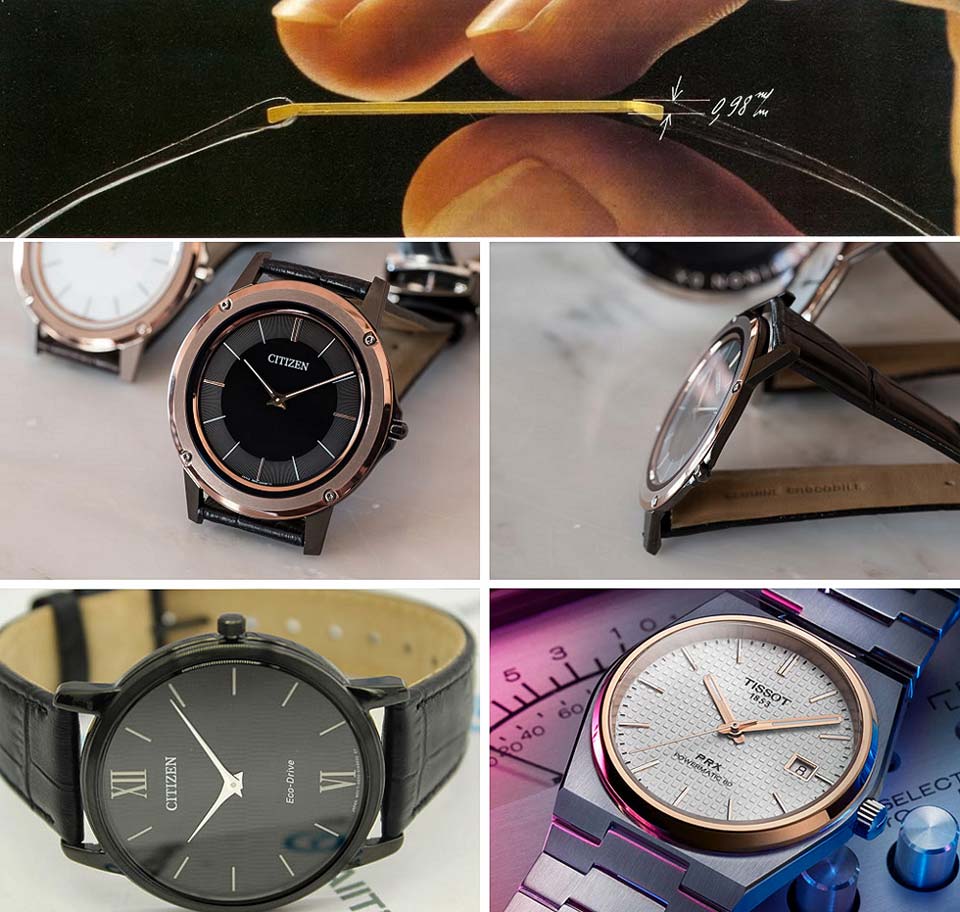
It is possible to treat such hours in different ways. We can say that we don’t want to wear a “copy of the Octo Finissimo for the poor” (yes, D1 is three orders of magnitude cheaper than Bvlgari watches). Or you can admire beautiful watches made by enthusiasts of design and watch history, and read the references they left for like-minded people. For you and me. And personally I prefer the second approach.
Chassis without flaws
The body of the D1 Milano is good, even if we ignore the associations and subtexts. The form is complex and multifaceted. All edges (both the case itself and various chamfers) are clear. The finish alternates: the polished bevelled bezel contrasts with the "brushing" of the bezel, case and sides. The icing on the cake is the subtlest, almost imperceptible hints of chamfering around the perimeter of the lower part of the case and on the edges of the lugs.
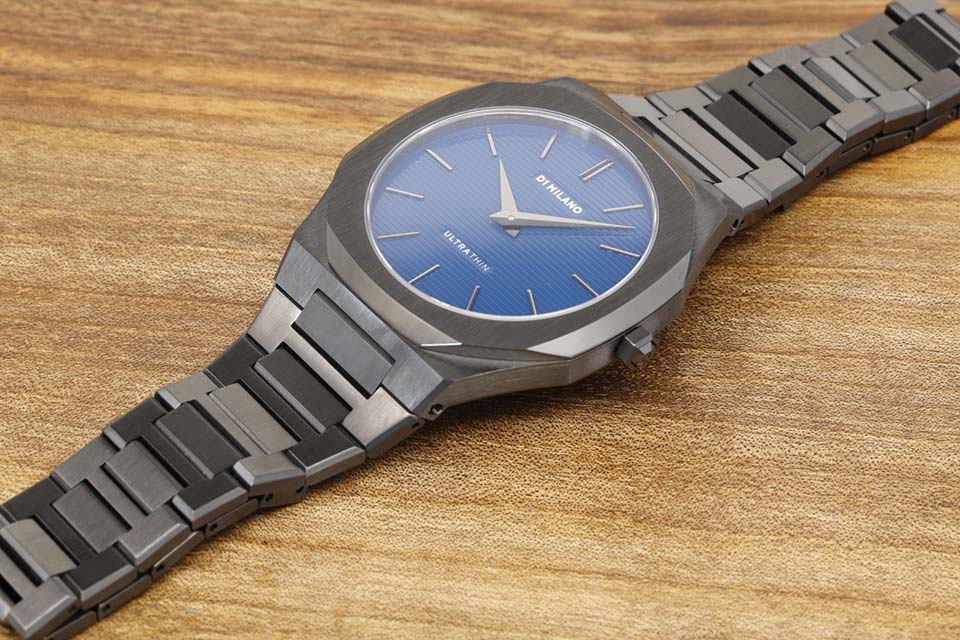
Even a very simple back cover with a simple shallow engraving does not reduce the overall impression - again, the details help out. In addition to the screws we already talked about, this is a contrasting black background for the logo. Lettering in black on even richer black is stylish.
There is nothing to complain about in terms of the body. But you need to remember that the black PVD coating will rub off. Sooner or later, anyway. You need to either mentally prepare for this, or protect the watch from every sharp corner ... Or choose a steel model without a coating.
But then you won't have the best watch face in the entire lineup.
The nobility of simplicity
And the dial of our UTBJ12 is really very good: dark blue (this is not pop navy blue, but the original petrol blue - well, we remember about chromatism), laconic, with longitudinal guilloche. Platforms were made under the inscriptions D1 Milano and Ultra Thin, and the inscriptions themselves were applied without obvious flaws. From any angle, the dial looks restrained and elegant, and it also reminds one again of PP Nautilus. Of course, many watches have “striped” guilloche and lettering areas, but in the general djent context of the D1 Milano brand, the first and main association is Nau.
Sharp arrows (this form is called dauphine) are made perfectly: evenly and without defects. Due to the longitudinal bend, they easily catch and reflect light. And what struck me the most is that there is a plug on the axis of the arrows. It is also not put on many much more expensive watches - such as the Tag Heuer F1 is seven times more expensive. And here - there is!
Another praise is for the laconic patch marks in the form of tinted metal bars. It is impossible to find fault with the quality of workmanship. But if you really want to, then you will need to take a macro photo. Then you can see that the marks at 3 and 9 o'clock are not parallel to the stripes on the dial. Either the marks are imprecise, or the dial itself is at an angle. But even knowing about the defect, I could not see it with the naked eye.
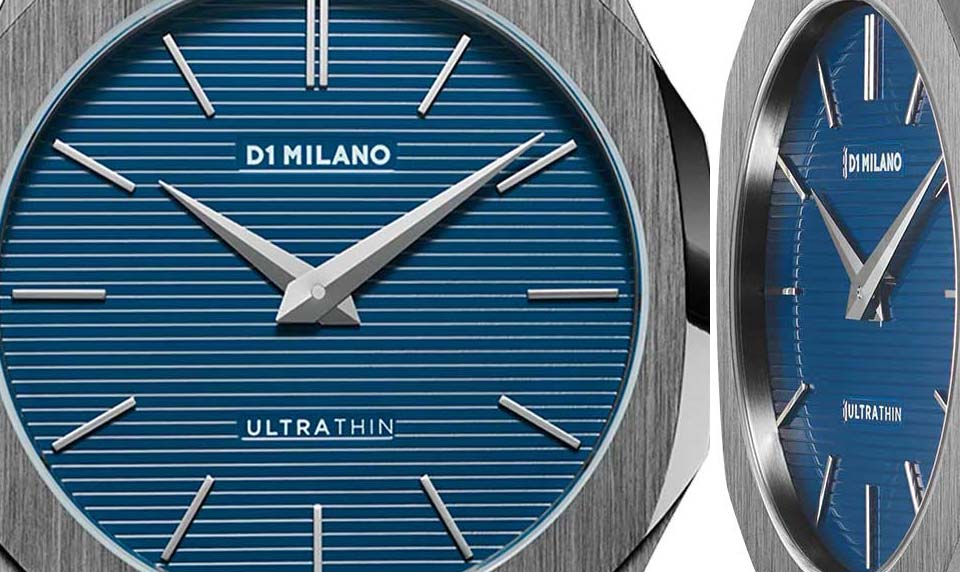
If not too lazy, you can measure the angle between the mark at 3 o'clock and the guilloche stripes.
Fly in the Ointment
The “Milanese” bracelet left me with an ambivalent impression.
It looks great - neat, with clear edges. On each of the "outer" links, sharp chamfers were removed on the sides. On the inner, connecting links, the chamfers are also removed along the long side.
Removable links are not fastened with studs, but with screws. On the one hand, this is “in an adult way”: Rolex or IWC, for example, have screws, while Casio Edifice or Seiko 5 have studs. On the other hand, it is inconvenient: if you do not have a thin watch screwdriver, then it will be difficult to adjust the bracelet at home. Expensive watches are supposed to be fitted to the owner's hand by a watchmaker, while the owner himself spends time in a company boutique with excellent coffee and a business magazine. The watchmaker is not included with the D1 Milano, so the decision is ambiguous.
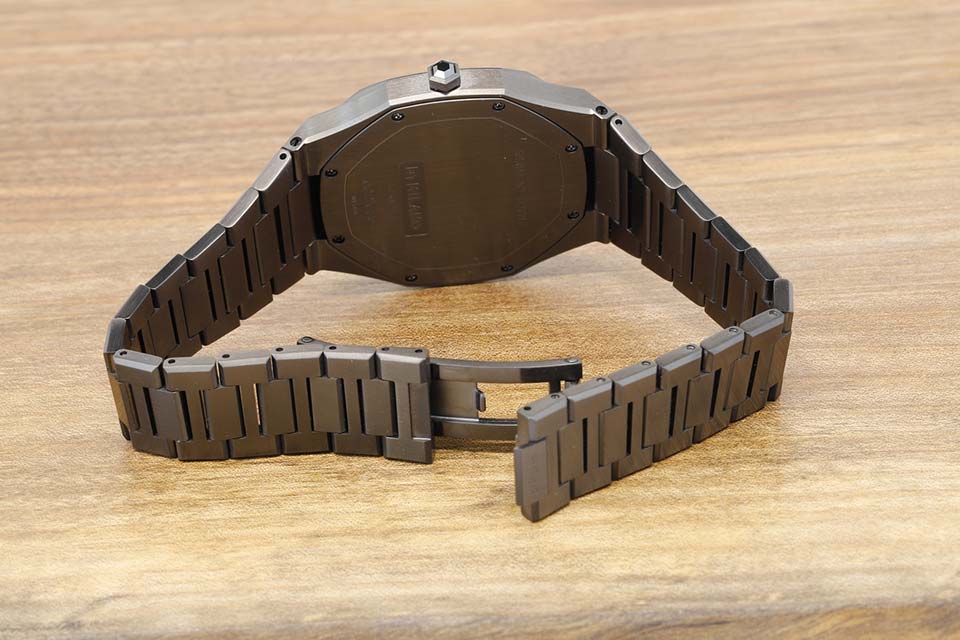
Of course, the bracelet is not stamped, but cast. But its architecture is reminiscent of the stamped rattling bracelets of the younger Casio. However, these are subjective impressions.
And here is an objective flaw: the PVD coating on the inside of the links was either initially poorly applied, or worn off while the watch was packed in a box. Nobody will see it, of course. But the owner knows something ... For this, minus half a point. I wonder how the bracelets of models without PVD are processed - maybe everything is just beautiful and polished there?
Another half point will be removed for the lack of precise adjustment of the bracelet. On most watches, you can more or less fine-tune the length of the bracelet by removing full or half length links. On thick and comfortable triple-fold buckles, you can also rearrange the studs in a couple of millimeter increments for a precise fit. But the D1 Milano has all the adjusting links of the same length, and there is no exact fit in principle. Most likely, this was done to please the design: the clasp does not increase the thickness of the bracelet, there are no extra holes in it, the links are uniform in width. But, alas, you will have to pay for beauty with comfort.
Finally, minus two points - for an unsuccessful clasp. Normal bracelets are unfastened with snap buttons. And here there are only two fixed metal tongues, for which the bracelet clings. It is unfastened by force: just pull the bracelet harder than the tongues hold. From the habit it is difficult, then - just uncomfortable. And there is a concern: whether the tongues will weaken in a couple of months so much that the watch will suddenly unfasten itself and fly off.
In general, I did not like the bracelet. And since it is integrated with the watch case, it is impossible to replace it with another bracelet, and it is difficult to replace it with a strap. You will have to buy authentic or sew to order.
Impressions of use
The D1 Milano UTBJ12 is chambered in Miyota 1L22. According to the instructions, the battery will last two years, third-party sources said about three. The declared accuracy is plus or minus 20 seconds per month, but most likely, the watch will be more accurate (the Japanese are often cautious in accuracy tolerances). The watch does not have a second hand, and there is nothing to miss the marks - this is how the main problem of inexpensive quartz watches is solved.
Thin 6 mm watches, in theory, should sit well on the hand. But in my case, they sit either loose or cramped - as I said, the bracelet can hardly be called successful. Minus a point for that. But even with a loose fit, the watch does not try to spin around the wrist: a relatively light case is balanced by a bracelet and clasp. So otherwise they are comfortable to wear.
Water resistance is 50 m. This is quite enough for ordinary life, but for the pool and sports it is still better to choose something like G-Shock.
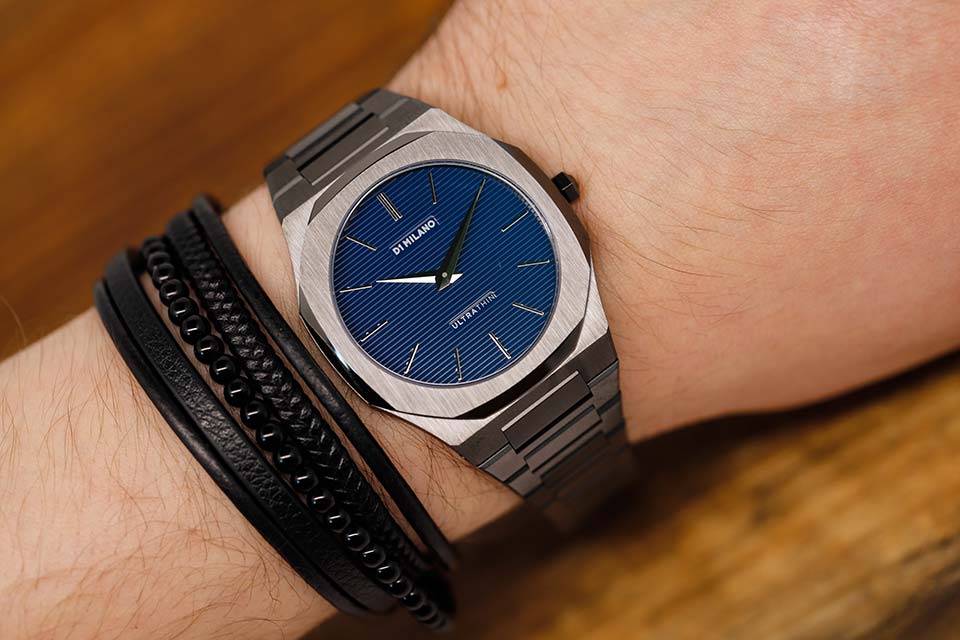
Compatibility, for my taste, is quite wide. Due to the elegance and small thickness, but at the same time sporty design (“octahedral” AP Royal Oak once created a new direction in watch styles – sport de luxe) D1 Milano seems to be combined with almost anything. Personally, my inner compass says that you can’t wear such a watch with shorts or a three-piece suit. But with a modern skinny two-piece suit, especially without a tie, it’s quite.
The readability of the watch is acceptable. Dark hands and markers are hard to see on the dark blue dial, but due to the polishing, the hands almost always catch the light and shine - this makes it possible to understand the time. And although sometimes you have to twist your wrist for a second to catch the desired angle, in general this does not create problems.
Sapphire crystal, they say, with anti-glare. In real life, glare really does not interfere, but taking a picture of the clock (and not the reflection of the ceiling or the dial in the glass) is another task.
Finally, the watch has a serial number. A trifle, but nice - after all, evidence of the uniqueness of the instance.
